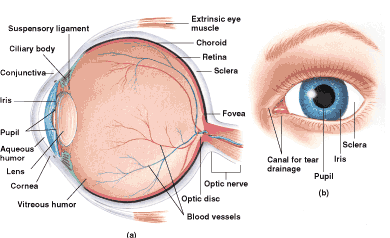Eye Cancer in India
About Eye Cancer ?
Eye Cancers can be primary (starts within the eye) and metastatic cancer (spread to the eye from another organ). The two most common cancers that spread to the eye from another organ are breast cancer and lung cancer. Other less common sites of origin include the prostate, kidney, thyroid, skin, colon and blood or bone marrow.
Tumors in the eye and orbit can be benign like dermoid cysts, or malignant like rhabdomyosarcoma and retinoblastoma.
Malignant
The most common eyelid tumor is called basal cell carcinoma. This tumor can grow around the eye but rarely spreads to other parts of the body. Other types of common eyelid cancers include squamous carcinoma, sebaceous carcinoma and malignant melanoma. The most common orbital malignancy is orbital lymphoma. This tumor can be diagnosed by biopsy with histopathologic and immunohistochemical analysis. Most patients with orbital lymphoma can be offered chemotherapy or radiation therapy.
Signs and symptoms
Melanomas (choroidal, ciliary body and uveal) - In the early stages there may be no symptoms (the person does not know there is a tumor until an ophthalmologist or optometrist looks into the eye with an ophthalmoscope during a routine test). As the tumor grows, symptoms can be blurred vision, decreased vision, double vision, eventual vision loss and if they continue to grow the tumor can break past the retina causing retinal detachment. Sometimes the tumor can be visible through the pupil.
A nevus is a benign, freckle in the eye. These should be checked out and regular checks on the eye done to ensure it hasn't turned into a melanoma.
Iris and conjuctival tumors (melanomas) - Present as a dark spot. Any spot which continues to grow on the iris and the conjunctiva should be checked out.
Eye Cancer

Treatment
Radiotherapy - The ophthalmologist decides in conjunction with the radiation oncologist which type of radiation therapy is most suitable, based on size and location of the tumour. Today, modern radiation treatment modalities, as proton therapy, are likely to be chosen, for providing superior accuracy in dose delivery, helping to spare healthy tissue and the sensible optic nerves.
Enucleation of the Eye - Removal of the eye, but the muscles and eyelids are left intact. An implant is inserted, then the person wears a conformer shield and later the person will have their prosthesis made and fitted (the prosthesis is made by someone called an ocularist and is made to look like their real eye)
Exenteration - Removal of the eye, all orbital contents, which can involve the eyelids as well. A special prosthesis is made to cover the defect and improve appearance.